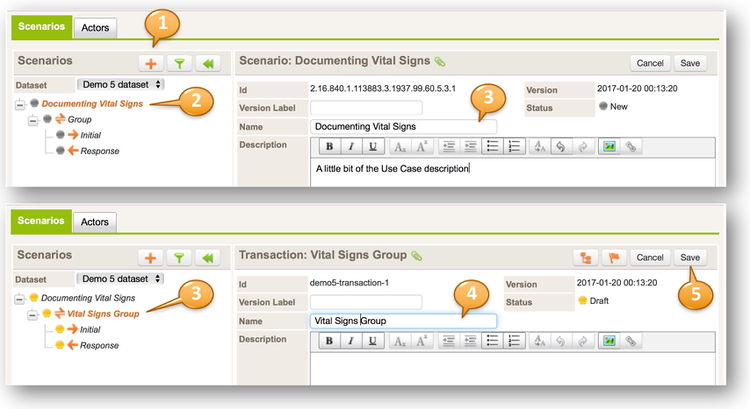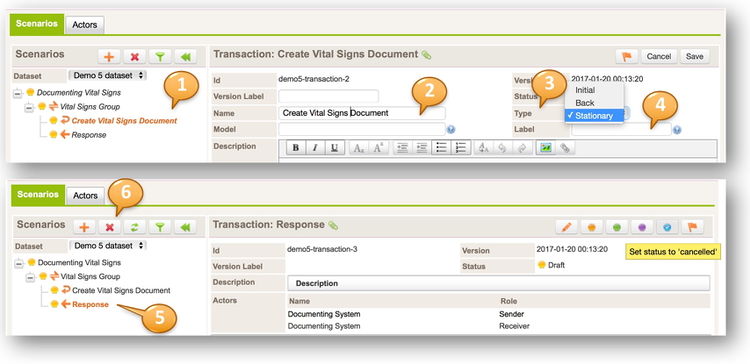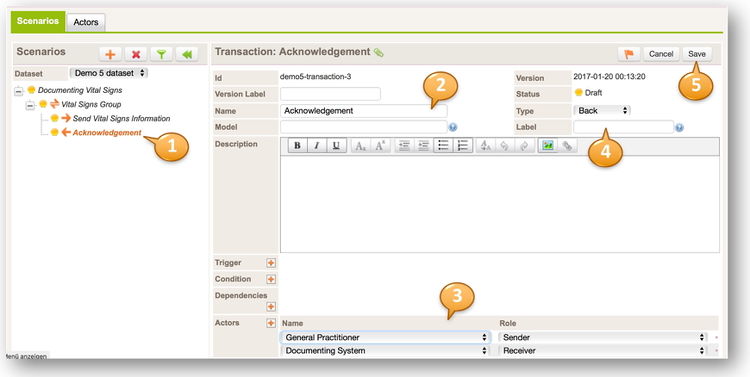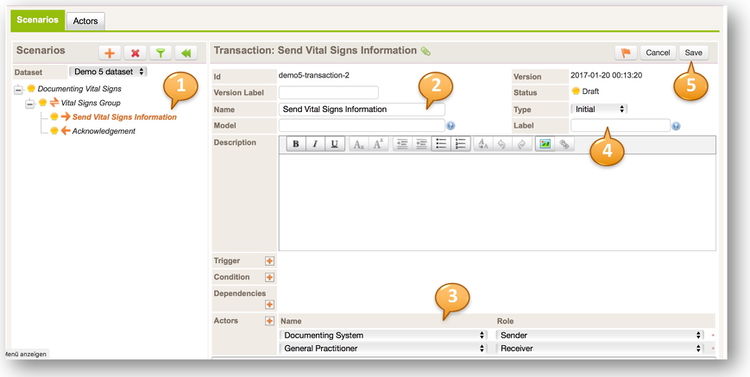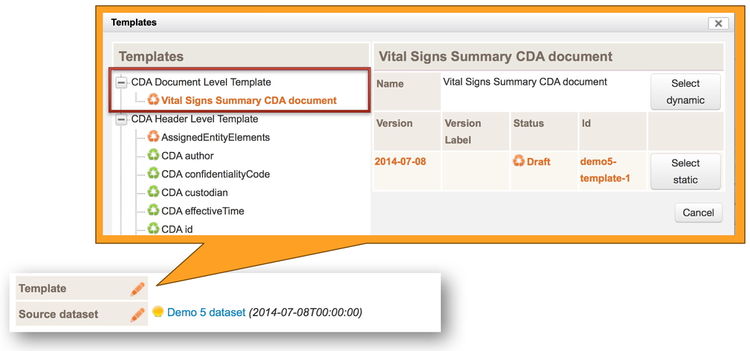Difference between revisions of "ART Scenario Editor"
(→Assign a Representing Template) |
|||
| Line 1: | Line 1: | ||
| − | {{Underconstruction}} | + | <!--{{Underconstruction}}--> |
| − | |||
== Introduction == | == Introduction == | ||
Scenarios are a container for transaction groups and transactions and will typically represent a health care use case, e.g. a Medication Prescription or a Radiology Examination. | Scenarios are a container for transaction groups and transactions and will typically represent a health care use case, e.g. a Medication Prescription or a Radiology Examination. | ||
Revision as of 00:35, 20 January 2017
Contents
Introduction
Scenarios are a container for transaction groups and transactions and will typically represent a health care use case, e.g. a Medication Prescription or a Radiology Examination.
Transaction groups contain Transactions.
Transactions represent a (sub)set of concepts from a dataset and add cardinality, conformance and possible conditions to them so they reflect the use case demands appropriately.
Creating a scenario
This documentation describes setting up scenarios from scratch, so there are no actors or scenarios present when starting.
Add Actors
Open the Actors tab. Add Actors by clicking on the plus sign (1).
Enter a name for the Actor (2), choose the type of actor: Person, Organization or Device (3). Click on the small plus under "Description" to add a description for this Actor.
Finally save the Actors by clicking Save (4) or cancel the edit by clicking Cancel.
Add Scenario and Transaction Group
Next create a Scenario by opening the Scenarios tab and clicking on the plus sign (1).
Click on the Scenario in the navigation area (2) and edit the name of the Scenario (3). Then click on the Transaction Group (4) and edit the name of the Transaction Group as well (5).
Finally hit the Save button (6) or cancel the edit by clicking Cancel.
Add a Transaction of Type "stationary" (e.g. CDA documents)
Click on the Transaction in the navigation area and edit the name (2). Select as type "Stationary" (3) because a CDA document is always a stationary transaction (the sending action´city is a different thing). In addition you need to label a transaction (4). This is a business name (only letters and digits are allowed).
 | The Transaction label is also used for the name of the resulting schematron file. For example, if the label is "vitsig2017" your schematron file would be named "projectprefix-vitsig2017.sch". |
Add a Transaction of Type "initial" and "back" (e.g. messages)
Assign a Representing Template
To assign a Representing Template to a Transaction, click on the respective Transaction and edit it. Right to the bottom you will find the "Template" with a pen to assign (or change) the Representing Template. By clicking on the edit pen you will get a list of all templates of your project. Choose the appropriate Representing Template (e.g. a CDA document level template, a message template) and click on the Save button.
Form parameters
The scenarios form, as most other forms, supports parametrization.
/decor-scenarios--[prefix]?id=[scenario/transaction id]&effectiveDate=[scenario/transaction effective date]&datasetId=[dataset id]&datasetEffectiveDate=[dataset effective date]&conceptId=[concept id]&conceptEffectiveDate=[concept effective date]
| Parameter | Description | Since |
|---|---|---|
| prefix | Project prefix | always |
| id | Switches to the project scenario or transaction with this id. Format: OID | always |
| effectiveDate | Switches to the project scenario or transaction with this effective date. Format: yyyy-mm-ddThh:mm:ss. Works only in combination with param id | always |
| datasetId | Filters the list of scenarios/transaction to those that binds the project dataset with this id. Format: OID | always |
| datasetEffectiveDate | Filters the list of scenarios/transaction to those that binds the project dataset with this effectiveDate. Format: yyyy-mm-ddThh:mm:ss. | art v1.5 |
| conceptId | Selects the dataset concept with this id in the selected transaction. Format: OID. Param only works if the param id points to a transaction that binds the dataset that contains this concept. | always |
| conceptEffectiveDate | Selects the dataset concept with this effective date in the selected transaction. Format: yyyy-mm-ddThh:mm:ss. Works only in combination with param conceptId | always |
| actorId | Selects the actor with this id in the list of actors. Format: OID. Setting this param assumes param section=actors | always |
| section | Switches to the requested section. Options
|
art v1.5.3 |

